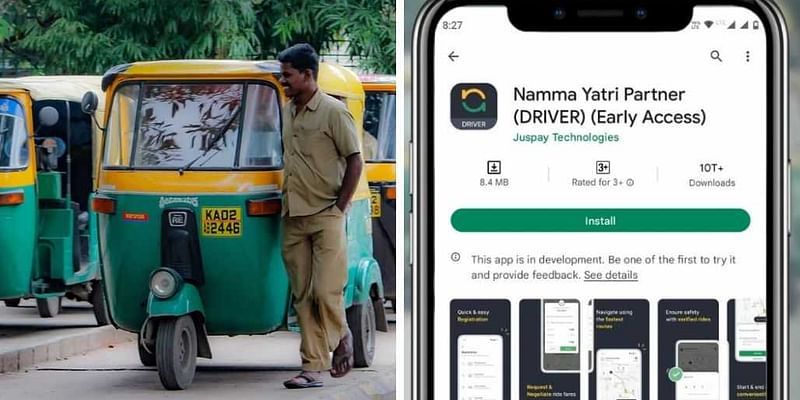[Product Roadmap] How CureFit is building an end-to-end healthcare ecosystem for Indians
A product roadmap clarifies the why, what, and how behind what a tech startup is building. This week, we take a closer look at CureFit, which is building a healthcare ecosystem with a focus on preventive, diagnostic, and curative modules.
When Mukesh Bansal and Ankit Nagori exited Flipkart and started , they had one goal in mind – build a holistic healthcare company. The duo believes that while healthcare startups have been around for a while, there wasn’t one player looking at all its aspects as a complete ecosystem.

The Curefit team at the first all-hands meet
“The idea was to make health and fitness a part of everyday life. For that, we looked at it from three parts – preventive, curative, and diagnostic. In the preventive side, we have fitness and food and MindFit, and the diagnostic and curative parts are being addressed by CareFit,” says Ankit Gupta, Head of Engineering and Organisation Operations at CureFit.
To test if there was a viable market, the team began with the preventive side of things, which felt like the biggest unaddressed segment. As a result, CultFit was set up in 2016.
“Even before we built the app or got the website going, we got two to three centres to understand the market and see if people are willing to pay for a format like this,” explains Ankit. The company began by acquiring Rishabh Telang and Deepak Poduval’s workout station on a no-equipment model.
As the final consumption of the ‘product’ would take place at the centres, Ankit and team wanted to control and perfect the experience right out of the bat.
Seeing how the concept of group classes was rare, unorganised, with only a few boutique centres having them, the CultFit team decided to win this business model.
“This also gave us a sense of where to open our centres, what kind of audiences to look at, and other details,” says Ankit. The first CultFit gyms were set up in Bengaluru – in Sarjapur, HSR Layout, and JP Nagar.
Website first
After setting up three centres, the next goal was to set up the website. This was around November of 2016 and the team realised that December and January would be profitable in the fitness business.
As an app would take time to build, the startup decided to launch its website first instead. This website is still functional and is responsible for 10 percent of CureFit’s traffic.
In May 2017, the app was launched with CultFit, EatFit, and at home meditation sessions.
“It was one of the first steps towards building a holistic fitness focus,” says Naresh Krishnaswamy, Growth and Business at CureFit.

The third all hands meet at Curefit
A robust feedback mechanism
From the beginning, CureFit had a simple feedback mechanism – a pop-up, which asked the user what they liked and what they didn’t like. In the initial days, whenever a user would give a bad rating, the tech and product teams would personally talk to them to understand what went wrong.
“Now, there are multiple forums. We have a ‘Customer Connect Programme’, where we have a schedule of who should talk to a customer at what time, and every employee talks to a customer,” says Naresh.

The first Curefit website
He explains that even today, whenever the team is looking at launching a product or bring in a new development, they talk to at least 20 to 30 users.
“We have a process of testing the product first with our employees. Then, we expose it to a centre and few users, and then roll it out. There is an internal philosophy that we don't scale the product until we reach a ‘1,000 true-fans’, ” says Naresh.
Ankit adds that this is part of the startup’s product-market fit criteria.
Several formats in CultFit and SKUs in EatFit have been launched and discontinued based on feedback. For instance, Mixed Martial Arts classes had to be discontinued.
“While there were a lot of users who wanted the product and were fans of it, we realised that we didn’t have a mechanism in place to manage and handle injuries. And, we weren’t able to do justice to it,” says Naresh.

Mukesh Bansal, Co-founder and CEO, Curefit
Tying it all up with the strategy
To plan for a year, the entire CureFit team goes for an offsite meeting where they come up with ideas for the coming year and reflect on the learnings from the previous one.
But on a deeper level, each team comes up with quarterly objectives and metrics. For the product and tech teams, the focus is on the capabilities. The decision to build a new product is made on the basis of the larger impact it will have on the overall business metric.
For example, CureFit has had DIY sessions on its app since the early days, which was a strategic call and isn’t something that has been monetised.
“We know that it is important because there are people who are users in cities where we aren’t present. So, the idea is that can we use to the app to significantly boost someone’s health,” he explains.
Since prioritisation is done from a business and strategic perspective, the product and tech teams need to focus on the expansion of a product. Then, using broader focus metrics, different features are added.
For example, tracking the availability of Cult classes and ensuring that a user is able to book at least one class at all times, and have a uniform experience.

The first Curefit app
Focus on scheduling and availability
Ankit says that in the startup’s first year, classes being fully booked wasn’t a challenge as they were at 80 to 90 percent capacity almost all the time, and some centres were doing exceedingly well. But, this soon became an issue as people who had subscribed to packages weren’t being able to book classes as they would be full already.
“Initially, all scheduling was being done manually, meaning it was inefficient with some classes going full and some going half full. We felt a system can do a better job. So, we built a system that could schedule the classes dynamically, based on the data. This got us a jump in the class availability metric that we track,” says Ankit.
To solve the availability problem, the team launched another feature – waitlist. Even if a class is full but you’re interested, you can register as a waitlist, and if someone backs off, you get a slot.
Another interesting factor is the ‘pay per class’ model, which was introduced in the startup’s initial days. The idea was to create a low commitment product to ensure that people at least take the first step towards leading a healthy lifestyle.

Ankit Gupta, Head of Engineering, Curefit
Building a habit
“There is a pattern in the fitness industry – many people buy memberships but aren’t able to make full use of it. Pay-per-class was a way to break that pattern,” says Naresh. Now while the classes are booked on a first-come-first-serve basis, the availability is shown on the members’ app four days in advance.
The next step was to bring in a behaviour shift. “Users needed to get used to the idea of booking a class through the app, which was a challenge. They took time to understand that they have to first pay for the membership and book it on the app. Today, this has changed,” adds Naresh.
Ensuring that classes start on time has also helped. These behavioural changes were needed to make fitness a lifestyle choice.

The new Curefit app
Learning from product asks
While CureFit already has a strong feedback mechanism and loop, it wasn’t always this. While EatFit was launched on a subscription model, the team soon realised that on-demand would work better.
“The customer feedback was, ‘I want healthy food even for one meal, and not a commitment for a month’,” recalls Ankit. As a result, the startup shifted to the on-demand model by 2017-end.
Different product asks help the team to decide whether the core tech needs to be built for scale from day one or not. EatFit, Ankit explains, was one product built to handle scale from the beginning. Primarily because it has many floating variables including kitchen and delivery systems.
“What we didn’t have at that time is a backend system that could help scaling into multiple cities. That came in when the basic features started working,” he says.
But the product rollout loop remains – test in a few clusters and then push it out. These clusters can also be cities. For example, ‘cash at the centre’ was first launched in Delhi.
In Delhi, people would go to a centre and pay for a membership. “The behaviour is more on impulse, and Delhi is more cash driven,” adds Naresh.

Naresh Krishnaswamy, Growth, Curefit
Becoming a holistic healthcare brand
At present, the team begins building features first for the app and then the website. Naresh clarifies that the experience is the same for the consumer. In the past two years, the startup has raised $294 million in eight funding rounds. It recently opened a centre in Jammu and Kashmir.
CureFit is present in Bengaluru, Mumbai, Delhi-NCR, Hyderabad, Chennai, Jaipur, and even Dubai. Its services are used by over 500,000 active subscribers.
The startup has more than 180 CultFit centres and 35 MindFit centres, and aims to increase this to over 800 centres by 2020.
At present, EatFit serves over 35,000 meals per day and is doubling this every three months. Now, the team is looking to reach 100 million users in the next 10 years.
(Edited by Saheli Sen Gupta)






![[Product Roadmap] How CureFit is building an end-to-end healthcare ecosystem for Indians](https://images.yourstory.com/cs/2/a9efa9c02dd911e9adc52d913c55075e/cultroadmap-1583848312226.png?mode=crop&crop=faces&ar=2:1?width=3840&q=75)








